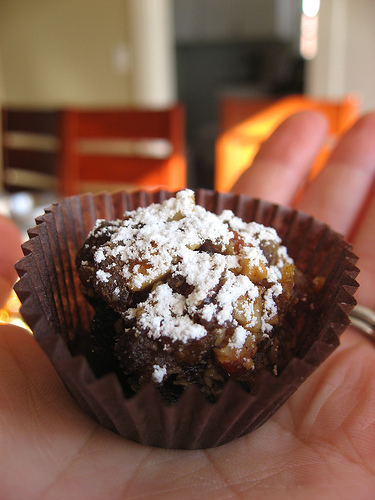The Stories Behind Forgotten Holiday Treats
Recipes, like songs and poems, are passed down from generation to generation. But some holiday recipes seems to have fallen through the cracks
Recipes, like songs and poems, are passed down from generation to generation. But some holiday recipes seems to have fallen through the cracks; they're passed on through songs and poems, but have become a thing of holiday lore rather than practice.
The famous poem "The Night Before Christmas" makes reference to sugar plums: "The children were nestled all snug in their beds, While visions of sugar plums danc'd in their heads." When reading this poem growing up, I always pictured some sort of fairy, most likely the influence of the Sugar Plum Fairy from the Nutcracker. Turns out, sugar plums are a type of Christmas sweet. (They're also a specific type of small, sweet plum.) Use Real Butter has a recipe for sugar plums that calls for toasted almonds, dried apricots, honey and plenty of cinnamon. She concludes that the confection was named for its shape, not the specific ingredients. Miss Ginsu (who unfortunately has stopped blogging) posted a similar sugar plum recipe that called for dried figs and cocoa powder.
Another treat that lives on in song instead of practice is wassail from the Christmas Carol "Here We Come A-Wassailing." Wassailing simply means caroling. In the Victorian era, beggars and orphans would go door to door singing and hoping to get a bite to eat or a drink. The name comes from the Middle English phrase wæs hæil, which means "be healthy." Wassail is a drink made from ale or beer and spices, kind of like mulled wine. Other versions includes hard alcohol such as brandy or even rum. Most wassail recipes call for some kind of fruit, generally apples, which makes wassail remind me of a British version of sangria. Epicurious has a version made from sherry, brandy and plenty of spices. Chow's recipe includes cranberry juice, apple cider and an apple brandy.
Of course, perhaps the most famous Christmas food item that no one has ever eaten might be figgy pudding, known, of course, from "We Wish You A Merry Christmas." Unlike the sugar plum, figgy pudding actually has figs in it. But the name still manages to be misleading as figgy pudding is more of a cake than a pudding. While it was popular from the 15th to the 19th centuries, figgy pudding's long cooking time (at least a three-hour steam) and high saturated fat (most recipes include suet, a form of fat found near an animal's kidneys) has curtailed its popularity in modern times. Good Housekeeping has a simplified recipe that uses boxed cake mix and bakes rather than steams the pudding. Dorie Greenspan, author of Baking: From My Home to Yours, presented her more traditional, steamed recipe on NPR.
If you're feeling adventurous and in the Christmas Spirit, try one of these recipes. If not, at least you'll know what figgy pudding is next time you hear "We Wish You A Merry Christmas."
